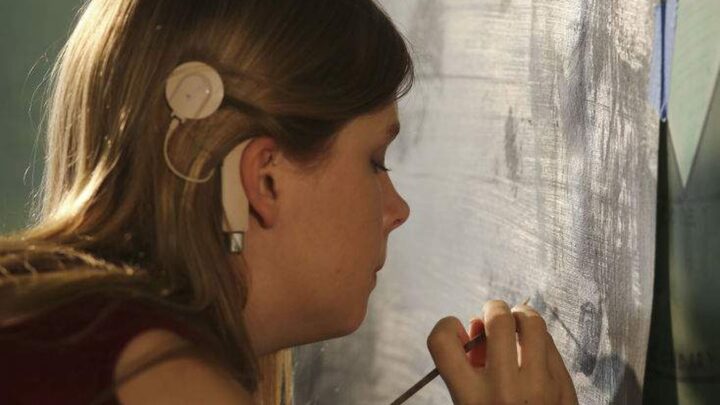What are the symptoms of Usher syndrome and how to treat it

Have you ever heard about the genetic disorder known as Usher or Hallgren syndrome, or sometimes you can find it as Usher-Hallgren syndrome too. It’s very rare, but it can be easily passed to the other generations if somehow occurs in the family. It’s a mutation in the genes, that results in visual impairment, hearing loss, deaf-blindness, or combined.
The group of symptoms is happening together, and they may be mild or even extreme. Sometimes it progresses too slow, so the issues can’t be detected immediately, which results in bigger damages as time goes by. According to medical studies, children can get it if both parents have Usher syndrome. Knowing the way genes work, if both parents carry these genes, they have one in four chances to have a child with Usher syndrome. Even if they try four times, all the four children may have it. But, there are cases when they don’t even inherit any of those issues. That only shows us how amazing is genetics and how it can save or ruin a whole family in a few minutes.
The good thing is that people are getting more aware of it, and consider it as a diagnosis that may have a huge impact on the person’s perspectives. There are a lot of campaigns worldwide, like ushersyndroom.nl, to help these people become a part of the society, without causing them additional suffering while they try to work and socialize.
Usher syndrome can be diagnosed since an early age if the child shows some of these symptoms:
- They have an issue with hearing
- They can’t hear you at all
- They have issues maintaining the body balance
- They say they can’t see what’s on the board in the school
- They are blind
Keep in mind that these symptoms don’t necessarily refer to Usher syndrome, and additional examinations or even genetic tests should be performed for the right diagnosis.
How it’s diagnosed?

Before they send the person to genetic testing, there are a few examinations that may determine what’s happening, like electronystagmography for the eye impairment and balance problems, vision testing, eye exam, electroretinography to see how the eyes react to light, and hearing evaluation. The results may show what’s happening, or if the person or child’s parents should do additional testing.
Sometimes a person can grow and develop perfectly fine and face the first symptoms later in life. There are no rules or specific patterns on how these things happen. It can occur in a child with the same frequency that it can occur in an adult. Some studies show that it happens in 4-17 in 100,000 people, and there are three basic types of it.
The three types of Usher syndrome

As we said, there are three types that may affect different populations in the world, due to their specific genes.
Type I and Type II are the most common in the world, and they occur in Ashkenazi Jewish or French Acadian people, more than in the general population. Type III is common in the Finnish population, but it’s detected in Ashkenazi Jewish people too.
Here are some specific symptoms you need to know about these types:
Type I: Usually, the children are born deaf or with hearing issues, and they show balance problems at the age they need to start walking without help from their parents. Sometimes even the hearing aid can’t help fix the issue. They should be included in special programs that practice talking or sign language. Vision problems occur later in childhood.
Type II: They have moderate symptoms at the moment they are born, but they become stronger in life. Hearing aids can help them communicate better with the family and at school. Some of the symptoms may get worse later in life, or they can stay the same until their old age.
Type III: These people are completely right when they are born. They have a good balance and listen to the sounds great. But, the first symptoms may occur while they are teenagers or young adults, and they need to wear eyeglasses, hearing aid, and practice exercises to maintain their body balance.
Diagnosing and treatment
Once the technical examinations are performed and the person has symptoms of Usher syndrome, genetic tests can be performed. There are clinical tests available worldwide, and everyone can get them if recommended by doctors, so they can give proper treatment.
There is no cure for this syndrome, but the symptoms can be successfully treated, by using medicines, supplements, proper aids, listening devices, or even a trained person who will work with those who are diagnosed with Usher syndrome.
It’s also important to take Vitamin A supplements because some studies showed it can slow down the symptom progression, which makes things easier for people. Women with Usher syndrome can get pregnant without any additional issues, and they need to consult with their doctor all the time, so they can have a healthy pregnancy.
The way the Usher syndrome is inherited is known as autosomal recessive pattern, which means there are mutations in the genes and their copies. People can have it, without showing any symptoms for their whole life, but still passing it to their children and grandchildren.
Most of the time, families aren’t aware of it, until the first case with symptoms occurs.
Conclusion

Not all syndromes are visible to the people, and we can’t tell that someone has it, until we get to know these people better. They can function completely fine, and be a part of the social events, work in regular companies, or even study and become successful in what they do. There can be some limitations due to the intensity of the symptoms though.
But, the good thing is that society is getting aware of these rare syndromes and we are all doing our best to help these people live a good life. They deserve it, and their conditions shouldn’t create boundaries around them, so we are all here to be supportive when needed.
